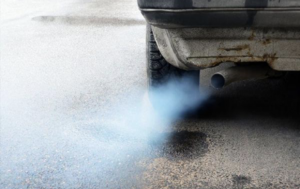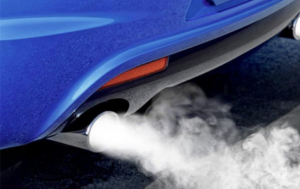We all know that a car exhaust system is an essential component of any vehicle. Whether you have an old model or the latest one, the exhaust system constitutes an integral part of the overall working of the car. The main objective is to move out the unnecessary and burnt air-fuel mixture from the engine. It cleans the emission and reduces unnecessary noise, thereby enhancing the overall performance of the car. The exhaust system consists of an Exhaust Manifold, oxygen sensors, pipings, catalytic convertor, resonator, muffler/silencer, and tailpipe. All the components work in harmony to move the exhaust gases to the back.
Its systematic placement at the rear makes it more obscured from the general driver’s view. And since it is a robust system, it is rare to see an issue arising. However, that does not mean it is free from faults. In fact, most drivers overlook the problem unless it starts affecting the overall working and demands to be checked by professionals. That could lead to some very expensive repairs and, not to mention, a fatal blow to the air quality outside. To keep an eye on the health of the exhaust system, take a look at this guide on car exhaust smoke to decode any issue arising.
Your car exhaust system tries to communicate through the different colour and type of smoke emitting from the tailpipe. Let’s take a look at the different colours and types and decide the underlying hidden subject attached to them. It is time to diagnose a smokey exhaust!
Smokey Exhaust – An Overview
There is a lot to decode when it comes to exhaust fumes. You need to ask yourself – does the smoke arise when the car is stationary or when you accelerate? What is the colour of the smoke – is it white with a hint of blue, or completely black? Does the fume have a pungent smell? Does it evaporate immediately or takes some time to disperse?
Your exhaust smoke can say a lot!
A well-maintained car is unlikely to encounter an issue with the exhaust system, and you should not be concerned. However, if the problem persists, drive down to the service centre for a car exhaust repair. On the other hand, if the car has missed several service checks and is poorly maintained, the exhaust smoke can be a sign of concern. Different smoke is caused by various things, including whether you own a petrol or a diesel car. Take a look at the different kinds of smoke to understand what your exhaust system is trying to tell you.
Smokey Exhaust – The Diagnosis
White Smoke
The most common type of smoke is the white one that comes out from the exhaust pipe. However, in some cases, it isn’t actually smoke at all. When you switch on the cold engine, the heating process takes some time that produces water vapour. The water vapour or condensation forms smoke when the engine heat rises. Once the car is completely warm, the steam soon evaporates entirely. So, where does the issue arise?
When you use your vehicle for short journeys, there is not enough time for the engine to heat up completely and convert the water vapour into fumes. The condensation formed in the system is not flushed out, and hence, over time, can lead to rust. The rust can lead to leaks and an inefficient system.
The real issue arises when the smoke is white, thick, and doesn’t stop. It is usually associated with a coolant leak, which is caused by a failed head gasket. It is an expensive repair since the head gasket acts as a seal between the engine block and the head. However, ignoring the issue might lead to a cracked engine block/cylinder head or a complete failure of the system.

Blue Smoke
Blue smoke is usually accompanied by a burning aroma, which is indicative of a leak somewhere within the system. The engine oil is entrusted with the responsibility to lubricate the moving parts but is never allowed to enter the fuel system.
In some cases, the smoke stops after a while, which simply designates that too much oil was put into the system. The excess oil, when done burning, stops the smoke emission. Another very common cause is the spilling of engine oil on the exhaust, which gives a burning smell when the exhaust runs hot. These are very basic issues. However, if you see the issue persisting in a car that has covered a few miles, it means a completely different thing.
The first diagnosis is that the valve seals or piston rings are worn out, allowing the engine oil to sneak into the fuel system. This can be solved by changing the seals, which proves to be a very heavy repair job. The other diagnosis also related to more than usual oil being used. Make sure you do the dipstick check to keep a tab on the oil loss. Minor loss of oil can be easily solved by adding more oil, however, if the loss is major, it might be symbolic of a bigger issue in the system.

Grey Smoke
Grey Smoke is pretty similar to the Blue smoke diagnosis since it can be a sign of excess oil burning in the engine. However, in a few cases, it can also be due to a faulty PCV valve. The Positive Crankcase Ventilation Valve is an emission control and is used to draw the unburnt fuel back from the lower part to the top. When this mechanism fails, it demands a PVC repair, which is not a very heavy job.
In the case of cars with an automatic gearbox, grey smoke can also indicate a leak in the system, which draws the transmission fluid into the engine.

Black Smoke
Black Smoke Emission causes are dependent on whether the car is powered by petrol or diesel. In the case of Petrol cars, black smoke implies that too much fuel is burning. To solve the issue, check for the car’s air filter clogging. If that is fine, take a look at fuel injectors and fuel pressure regulators.
In the case of diesel-powered vehicles, black smoke indicates a build-up of soot that happens when the car is driven only at slow speeds. The DPF (Diesel Particulate Filter) is largely known to capture the soot from unburnt diesel and pump it out from the exhaust system. You can solve the problem by driving your car at 70mph to dislodge the soot. It appears as a big ball of black smoke and might even lead to soot deposit on the road.
This brings us to the end of our guide on car exhaust smoke. Hope this was helpful. For more such articles, keep watching this space!









